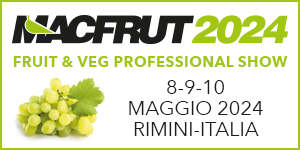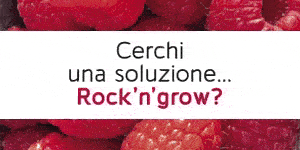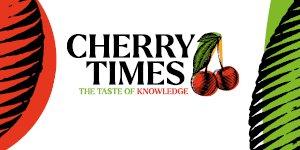The cultivation of blueberries is in vogue and in demand by countless consumers around the world. This has prompted the incorporation of technologies such as spectrometric optics in the fields to permanently measure the condition of these fruits on site and know the optimal time for harvesting. And although the truckers' strike threatened logistics processes right at the beginning of the new season, the industry is resilient and will continue to improve all its processes.
There is no doubt that Chile is one of the countries with a prestigious international reputation for the production and export of agricultural products. Fresh fruit is our star, because according to the latest report from theOffice of Agricultural Studies and Policy (Odepa), it leads forestry and livestock exports, with 33 percent of the total, followed by pulp (16 percent), wood (15 percent), and wine and meat (both at 8 percent).
Over the years, the careful work done on farms dedicated to growing fresh fruit has positioned us in countries where consumer demands are increasingly high and sophisticated, increasing demands on both fruit quality and the ecologically responsible and traceable production process.
| Month | Volume |
| January | 30.671.687,26 |
| February | 31.898.042,95 |
| March | 12.802.584,50 |
| April | 480.233,30 |
| May | 30.737,64 |
| June | 54.871,50 |
| July | 10.368,00 |
| August | 29.344,89 |
| September | 19.584,00 |
| October | 247.089,84 |
| November | 1.208.203,47 |
| December (week 1) | 1.208.738,58 |
| Total | 78.661.485,929 |
This international recognition, however, was threatened at the very beginning of the harvesting, sorting, cooling and shipping season by the road blockade as part of the trucking strike, which was resolved on Monday night, 28. "Today the cold storage rooms are full, with no possibility of storing more fruit, and for the same reason, the industry does not have the loading capacity for the ships, nor the way to reach them," warned theChilean Association of Fruit Exporters (Asoex).

CUTTING-EDGE TECHNOLOGY FOR TRACEABILITY
However, in spite of the severe damage caused by the roadblocks, the domestic fruit industry is holding out and refining all its links to further improve the quality standard of plantations, finding an important ally in technology. One new method is the use of spectrometric optics to avoid conventional laboratory procedures, which involve destructive techniques on fruit and take a long time to obtain a result.
According to Paula Vargas, an agricultural engineer, a researcher at theInstitute of Agricultural Research (INIA) and a student in the Master of Science in Data Science program at the University of San Sebastian (USS), "the introduction of technology is increasingly affordable in terms of investment and seems to be the answer to the challenges of the fruit export sector."
The development and implementation of new technological tools contributes to the development of sustainable and more productive agriculture, as it helps not only to diagnose and understand crops from plant interaction with the environment, but also to mitigate environmental damage by adjusting both fertilization measures and efficient water use.
Thermal cameras, spectroradiometers, RGBs to diagnose crop symptoms, satellite images that work like a scanner to see where the problem is and guide the producer to address the disease in his field are just some of the innovations in the field.
In this regard, Paula Vargas comments that "technology allows us to see precisely what the crop needs; we can diagnose soil fertility and plant status to automatically generate reports that come to the grower's phone, so he can see what measures to take correctly and in advance." In other words, it is now possible to assess in advance which plants to plant and which not to plant in certain locations, making investment, soil and water use efficient.
This can be done without using more resources and without affecting the profitability of producers, as technological tools are increasingly accessible. "All of this is very relevant. Without going further, if there is no updating, the punishment in international markets can be up to 40 percent compared to other more technologically advanced countries," the agronomist points out.

THE ATTRACTIVENESS AND CARE OF THE BLUEBERRIES
The production of blueberries has become a commercial attraction for export, and demand at the international level, which is giving rise to new competitors, is forcing Chilean producers to act quickly and innovatively with the help of information and communication technologies (ICTs) applied to digital agriculture in order to maintain the country's leadership as an exporter of blueberries in the southern hemisphere.
Paula Vargas has been specializing in blueberries for the past four years and has been working on her thesis for the past year and a half. The USS specialist explains that "the traditional methods used in Chile to estimate yields are erratic, with high variability (±50 percent), because they are carried out by periodically counting yield parameters, which, due to time and resource availability, does not allow for an 'n' sample to consider the spatial variability that exists in the field, including all the factors that influence the soil-plant-water-climate relationship, resulting in an uncertain quantity of fruit of unknown quality."
On this basis, together with INIA and Hortifrut S.A., they sought to provide solutions not only to the company, but also to the entire production chain, by studying nondestructive monitoring systems using spectrometric optics and technology (OST-SMART) to control and manage the spatial variability of production and quality of blueberries.

The USS researcher explains that by incorporating this technology, they wanted to assess the optimal harvest point and fruits without having to destroy them, thus having a large number of samples representative of the marketing destination.
In fact, this system is able to monitor from day one, when the fruits begin to take color inside the tree, to the exact time of harvest. On the other hand, a large number of samples can be evaluated in a limited amount of time, which is a key indicator, because when they arrive at their destination, in Asia or Europe, they are discarded due to over-ripening or because they damage other fruits. Thus, tracking of blueberries is much more accurate, efficient, and representative than a couple of years ago.
With the benefits of using technological tools in the cultivation of blueberry, the country faces enormous challenges on all fronts. The keys to accelerating the country's growth will depend on innovation and technological development as sources of productivity growth and competitiveness, at the corporate and national levels. This requires the collaboration of various entities, both public and private, universities and large companies.
CHALLENGES FOR ACADEMIA
Regarding the challenges that agriculture imposes on academia, Paula Vargas explains that "updating the curricula of universities seems essential to me, because in the agricultural world many older generations are already obsolete in their use of technology. Today agriculture is a multidisciplinary job where environmental engineers, software developers, sociologists and many others are an essential part of the work. This makes it possible to expand into other careers and generate new sources of work.
On the other hand, to reach the international demand that is being demanded today, it is necessary not only for users to adapt to technologies that are often reluctant to change, but also for government and corporate policies to expand investment in technology to enable and make efficient use of resources.
"Today, for example, we are doing research within INIA itself on pests and diseases, to identify the pest and not use pesticides or avoid them as much as possible. This anticipates, takes care of groundwater, avoids the greenhouse effect, among other things," Vargas concludes.
Source: Blueberries Consulting
Blueberries Consulting is part of the global network of Italian Berry









